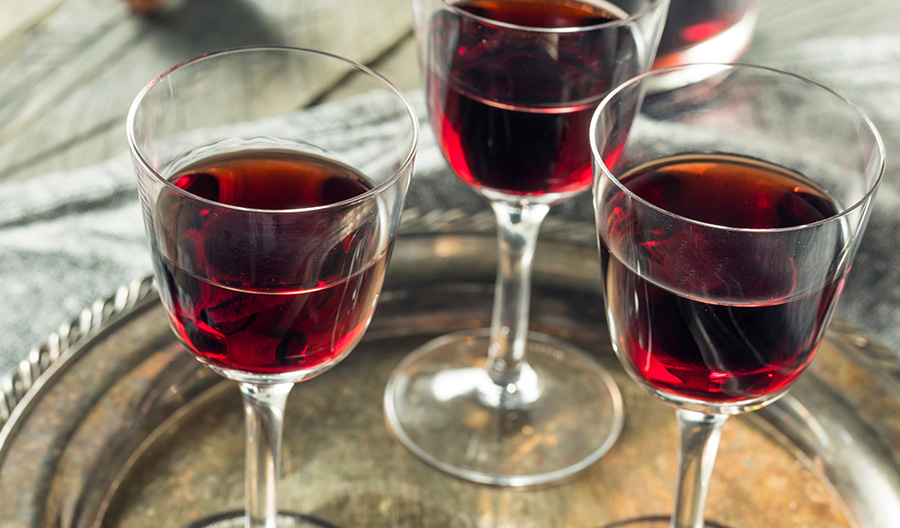All Ports are made from some 50 very-hard-to-pronounce red and white grapes grown in Portugal’s Douro Valley, about 60-plus miles east of the City of Porto. These wines generally have about 20-percent alcohol by volume (ABV) in the finished product.
Ruby Ports are fruity and tend to be served earlier without the age statements that can come with Tawny Ports. They are often aged in stainless steel or concrete, while Tawny Ports are generally cellared in oak. Each of these two types of Ports embodies the color for which it is named, with Ruby Ports generally being a deep unctuous red and Tawny versions a deep, brown tone.
A Bit of History
The British fueled the modern Port industry when it boycotted French wines in the 1600 and 1700s, because of political conflicts. To help the wine make the long journey on the water to the United Kingdom, a touch of brandy was added to the delicate spirit. This made the final wine considerably sweeter by halting fermentation while there was still a notable amount of residual sugar in the Port.
The primary grapes used to make Port are Touriga Nacional, for structure; Touriga Franca, for soft tannins; and Tinta Roriz, which is the same grape as Spain's Tempranillo. The name “Port” is derived from the coastal city of Porto, Portugal’s second-largest city, which is strategically located at the mouth of the Douro River, where, for centuries, Port began its long journey north.

Serving and Pairing these Ports
Rubies are generally served cool at around 65 degrees centigrade, or sometimes at room temperature and don’t have to be decanted. They have fresh and intense berry, tobacco, fig, and spice flavors with a hint of high alcohol. They are ideal with fruit desserts and chocolate.
Tawny Ports range from dark brown to a deep orange tone and often have notes of cherries, caramel, and even toffee. They are made of a blend of vintage wines and can be slightly sweet in taste and do not need to be decanted. Tawny Ports can be paired with cheeses and nut-influenced desserts and should be served slightly chilled at around 57 degrees Fahrenheit.
Tawny Ports can have age statements that range from 10 to 40 years. The amount of time they spend in oak determines the nuttiness of the notes when poured. There is also a subset of Tawny Ports known as “colheita,” meaning harvest, which are made from a single vintage (or one-year harvest).
In addition to being paired with cheese as a dessert or enjoyed as an after-dinner drink, Port can be mixed in cocktails or used in recipes that would be elevated with additional flavor. Port can even be used for deglazing to create rich sauces. Be adventurous and experiment with this wine, so rich in history.

